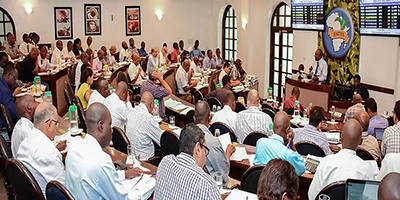Although the Kenyan government continues to promote the reform of the tea industry, the weekly price of tea auctioned in Mombasa still hit a new round of record lows.
Last week, the average price of a kilo of tea in Kenya was US$1.55 (Kenya shillings 167.73), the lowest price in the past decade. It is down from 1.66 US dollars (179.63 Kenyan shillings) the previous week, and prices remain low for most of this year.
The East African Tea Trade Association (EATTA) pointed out in a weekly report that out of 202,817 tea packaging units (13,418,083 kg) available for sale, they only sold 90,317 tea packaging units (5,835,852 kg).
Approximately 55.47% of the tea packaging units are still unsold. “The number of unsold teas is very large due to the tea starting price set by the Kenya Tea Development Board.”
According to market reports, tea packaging companies from Egypt are currently interested and dominant in this, and Kazakhstan and CIS countries are also very interested.
“Due to price reasons, local packaging companies have reduced a lot of work, and the low-end tea market in Somalia is not very active.” said Edward Mudibo, managing director of the East Africa Tea Trade Association.
Since January, Kenyan tea prices have been on a downward trend for most of this year, with an average price of US$1.80 (a 194.78 precursor), and prices below US$2 are usually considered “low-quality tea” by the market.
Kenyan tea was sold at the highest price of US$2 (216.42 Kenyan shillings) this year. This record still appeared in the first quarter.
At the auction at the beginning of the year, the average price of Kenyan tea was 1.97 US dollars (213.17 Kenyan shillings).
The continued decline in tea prices occurred when the Kenyan government promoted the reform of the tea industry, including the reform of the Kenya Tea Development Agency (KTDA).
Last week, the Cabinet Secretary of the Ministry of Agriculture of Kenya, Peter Munya, called on the newly formed Kenya Tea Development Agency to take quick actions and strategies to increase farmers’ income and restore sustainability and profitability to the derivative industry of the tea industry ability.
“Your most important responsibility is to restore the original authorization of the Kenya Tea Development Board Holding Co., Ltd., which is implemented through the Kenya Tea Development Board Management Services Co., Ltd., and refocus their respective subsidiaries to serve the interests of farmers and create for shareholders. Value.” Peter Munia said.
The top countries in tea export rankings are China, India, Kenya, Sri Lanka, Turkey, Indonesia, Vietnam, Japan, Iran and Argentina.
As the first-tier tea-producing countries recover from the trade interruption caused by the new crown epidemic, the global tea oversupply situation will further deteriorate.
In the six months from December last year to the present, small-scale tea farmers under the management of the Kenya Tea Development Agency have produced 615 million kilograms of tea. In addition to the rapid expansion of the tea planting area over the years, the high tea production is also due to the good conditions in Kenya this year. Weather conditions.
The Mombasa tea auction in Kenya is one of the largest tea auctions in the world, and it also trades tea from Uganda, Rwanda, Tanzania, Malawi, Ethiopia and the Democratic Republic of Congo.
The Kenya Tea Development Authority stated in a recent statement that “the large amount of tea produced in East Africa and other parts of the world has caused the global market price to continue to fall.”
Last year, the average auction price of tea dropped by 6% compared to the previous year, which was attributed to this year’s high production and the sluggish market caused by the new crown epidemic.
In addition, the strengthening of the Kenyan shilling against the US dollar is expected to further erase the gains that Kenyan farmers gained from the exchange rate last year, which has reached a historical low of 111.1 units on average.
Post time: Jul-27-2021

